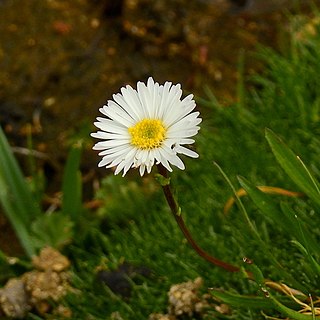
Syringa is a genus of 12 currently recognized species of flowering woody plants in the olive family or Oleaceae called lilacs. These lilacs are native to woodland and scrub from southeastern Europe to eastern Asia, and widely and commonly cultivated in temperate areas elsewhere.

Stanhopea is a genus of the orchid family (Orchidaceae) from Central and South America. The abbreviation used in horticultural trade is Stan. The genus is named for the 4th Earl of Stanhope (1781-1855), president of the Medico-Botanical Society of London (1829-1837). It comprises 55 species and 5 natural hybrids. These epiphytic, but occasionally terrestrial orchids can be found in damp forests from Mexico to Trinidad to NW Argentina. Their ovate pseudobulbs carry from the top one long, plicate, elliptic leaf.

Trachycarpus fortunei, known in English as Chusan palm and in American as Chinese windmill palm, is a species of hardy evergreen palm tree in the family Arecaceae, native to parts of China, Japan, Myanmar and India.

A taxonomic system for seed plants was published in Bentham and Hooker's Genera plantarum ad exemplaria imprimis in herbariis kewensibus servata definita in three volumes between 1862 and 1883.

The Trichiini are a tribe of the scarab beetle family (Scarabaeidae), though historically they were often classified as a subfamily, Trichiinae. In Europe, the conspicuous bee beetles (Trichius) are probably the best-known genus of the tribe.

Molytinae is a subfamily of weevils described by Carl Johan Schönherr in 1823.

Polycestinae is a subfamily of beetles in the family Buprestidae: known as "jewel beetles".

Hippeastrinae is a subtribe of plants classified under the tribe Hippeastreae. It belongs to the subfamily Amaryllidoideae of the Amaryllis family (Amaryllidaceae).
Adolf Horion was a German entomologist who specialised in Coleoptera.
Epistrophus may refer to:
Maevia Noemí Correa (1914–2005) was an Argentine botanist, researcher, botanical curator, and professor. She studied at the Faculty of Natural Sciences and Museum Studies at the National University of La Plata, and in 1953 completed a doctorate in natural sciences at the same university, with a dissertation titled, "Las Orquídeas Argentinas de la Tribu Polychondreae Schltr., subtribu Spiranthinae Pfitzer", under the direction of Dr. Ángel Lulio Cabrera. Between 1956 and 1957, the American Association of University Women sponsored her study at the University of California, Berkeley. From 1956 to 1958, she served as technical researcher at the Ministerio de Agricultura y Ganadería, and the Botany Institute in Argentina. She is associated with the National Agricultural Technology Institute (NITA) and served there between 1958 and 1983 as a technical researcher. She worked on several projects during her career including "Estudio y relevamiento de la Flora Patagónica", and "Estudio taxonómico de la Flora Patagónica". She served as herbarium curator, and as the Argentine National Coordinator of the Regional Flora Plan (1981–1990).
Megathous is a genus of click beetles in the family Elateridae. It was originally established by Edmund Reitter as a subgenus of the genus HarminiusFairmaire, 1851. There are more than 10 described species in Megathous, found in the Palearctic.
Elsa Matilde Zardini (1949-2020) was an Argentinian-Paraguayan botanist, teacher, curator, and explorer. She made botanical expeditions in the US, Brazil, Argentina and Paraguay. Three botanical taxon names were authored by Zardini. Her specialization was the flora of the Plata basin, with an emphasis on that of Paraguay.

Symphyotrichum glabrifolium is a species of flowering plant in the family Asteraceae native to Argentina and Chile where it inhabits wet meadows and stream edges. It is a perennial, herbaceous plant that grows 5 to 25 centimeters tall. Its flowers have white or lilac ray florets and yellow disk florets.

Symphyotrichum graminifolium is a species of flowering plant in the family Asteraceae native to the South American countries of Argentina, Bolivia, Brazil, Paraguay, and Uruguay. It is a perennial, herbaceous plant that grows to 1.5 meters tall. Its numerous flowers are in broad corymbiform arrays with lilac or bluish ray florets.

Symphyotrichum patagonicum is a species of flowering plant in the family Asteraceae endemic to the Argentinian provinces of Chubut, Mendoza, Neuquén, and Santa Cruz. It is an annual, herbaceous plant that grows 3 to 30 centimeters tall. Its flowers have short white ray florets in 3 or 4 series and numerous disk florets.

Symphyotrichum peteroanum is a species of flowering plant in the family Asteraceae endemic to Argentina and Chile. It is a perennial, herbaceous plant that grows 20 to 60 centimeters tall. Its flowers have white ray florets in one series that are 6–8 millimeters long. It grows in tall forests with trees that exceed 15 meters at elevations of 1,000–2,200 meters in humid montane ecosystems.

Symphyotrichum vahlii is a species of flowering plant in the family Asteraceae native to South America, specifically the countries of Bolivia, Chile, and Argentina, and on the Falkland Islands. It is herbaceous and grows 10 to 60 centimeters tall. Its flowers have white ray florets of length 6 millimeters. It grows in wetland areas of tall forests with trees that exceed 15 meters. One infraspecies is accepted, Symphyotrichum vahlii var. tenuifolium, in addition to the autonym S. vahlii var. vahlii.

Symphyotrichum regnellii is a species of herbaceous flowering plants in the family Asteraceae native to Argentina and Brazil. It grows to heights of 60 to 120 centimetres, and its flowers have white to pink ray florets that have lengths up to 3 millimetres. It grows in swamps and wet savannas.

Lueckelia is a monotypic genus of flowering plants belonging to the family Orchidaceae. The only species is Lueckelia breviloba(Summerh.) Jenny It is within the Tribe Cymbidieae and Subtribus of Stanhopeinae Benth. (1881).















